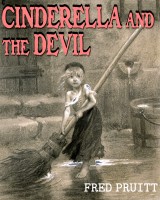|
2007-06-12 Home Front: Culture Wars
|
|
Rolling Stone Finding Out Green Isnt Green Enough
|
The New York Times can find something to carp about anywhere and everywhere it looks.
Just about every major magazine has made some sort of nod to global warming, and Rolling Stone plans to do so in its June 28 issue: on top of the requisite interview with former Vice President Al Gore and an essay by the environmentalist Robert F. Kennedy Jr., the magazine will start printing on paper that is said to have less of a negative impact on the environment.
Rolling Stone is devoting its June 28 issue to global warming. But as Rolling Stone and others try to be green, they draw criticism from environmentalists who think that if this is walking the walk, it is doing so with a pronounced limp.
Rolling Stone will be printed on what it calls carbon neutral paper, because it is made through a process that the magazine claims adds no carbon dioxide to the atmosphere. The paper, which is considerably thinner than what Rolling Stone uses now, is made by a Canadian mill, Catalyst Paper, that the magazine says has reduced greenhouse-gas emissions by 82 percent since 2005 and been cited by the World Wildlife Fund for its conservation efforts.
Catalyst offsets the small amount of carbon released in making the paper by planting trees that will not be harvested for more paper, but rather left standing to help cool the climate, said Lyn Brown, a vice president at Catalyst.
What neither an editors note in Rolling Stone nor a press release sent by the magazine mentions, however, is that the new paper has no recycled content, which prompted a mixed review by Frank Locantore, director of the Magazine Paper Project at Co-op America, a nonprofit group that works with publishers to reduce paper use.
Are the steps that Rolling Stone is taking good and important ones? Mr. Locantore asked. Yes. But what Im afraid they are doing in the process is diverting attention away from the need to use recycled paper. He added, All the evidence shows that the greatest ecological and social benefits come from using recycled paper. Eric Bates, deputy managing editor of Rolling Stone, said, We think recycled paper is great.
But, he added, were publishing some of the worlds greatest photographers and artists, and the print quality on recycled paper does not do them justice. What were trying to do is what we can do. We cant put out the magazine we put out on recycled paper.
Mansueto Ventures, which publishes Inc. and Fast Company, announced last week that it had switched both its publications to 100 percent recycled paper and had noticed no slip in quality.
It did really used to be true that you would lose quality by switching to recycled, but I dont think thats the case anymore, John Koten, chief executive and editor in chief of Mansueto, wrote in an e-mail message.
Hearst Magazines, which publishes 19 magazines in the United States including Cosmopolitan, Seventeen, Esquire and O, The Oprah Magazine said in April that beginning in July, it would put a Please Recycle This Magazine logo prominently in all its magazines. Whether the company uses any recycled paper for those magazines, though, remains an open question.
In March, Marc Gunther, a senior writer at Fortune magazine, wrote a piece on his Web site about his fruitless attempts to get a straight answer out of Hearsts press office about whether O, The Oprah Magazine has any recycled paper content.
Asked by The New York Times whether Hearst was using recycled pulp in its magazines, Andrea Faville, a spokeswoman for Hearst, e-mailed what she called a backgrounder on Hearsts green efforts. It said the company is using more than 15 percent of post-consumer recycled fiber content across its portfolio of publications.
But is any of that recycled fiber going into magazines, or instead into the companys dozens of newspapers and trade publications? Right now, we dont have any info for you beyond what is in the backgrounder, Ms. Faville responded by e-mail.
The media doesn't care about the 90% of the news that is good, and not much about the 9% that is bad. They like to focus on the 1% that is morally reprehensible. I read it at Rantburg. 
|
Posted by Bobby 2007-06-12 06:39||
||
Front Page|| [11129 views ]
Top
|
|
Posted by tu3031 2007-06-12 09:05||
2007-06-12 09:05||
Front Page
Top
|
|
Posted by Mike 2007-06-12 10:02||
2007-06-12 10:02||
Front Page
Top
|
|
Posted by Anonymoose 2007-06-12 10:13||
2007-06-12 10:13||
Front Page
Top
|
|
Posted by BrerRabbit 2007-06-12 12:03||
2007-06-12 12:03||
Front Page
Top
|
|
Posted by DoDo 2007-06-12 12:43||
2007-06-12 12:43||
Front Page
Top
|
|
Posted by rjschwarz 2007-06-12 13:02||
2007-06-12 13:02||
Front Page
Top
|
|
Posted by USN, Ret. 2007-06-12 17:23||
2007-06-12 17:23||
Front Page
Top
|
|
Posted by treo 2007-06-12 20:24||
2007-06-12 20:24||
Front Page
Top
|
|
01:46 Grom the Affective
01:33 Besoeker
01:22 Besoeker
00:59 Besoeker
00:48 Besoeker
00:40 Frank G









|











